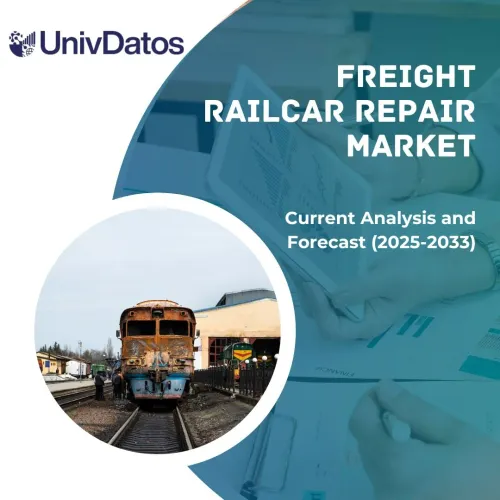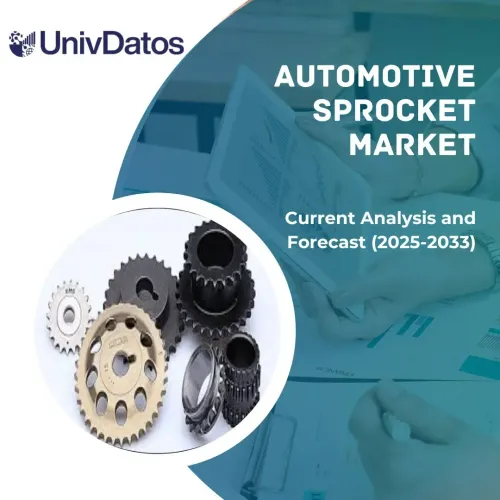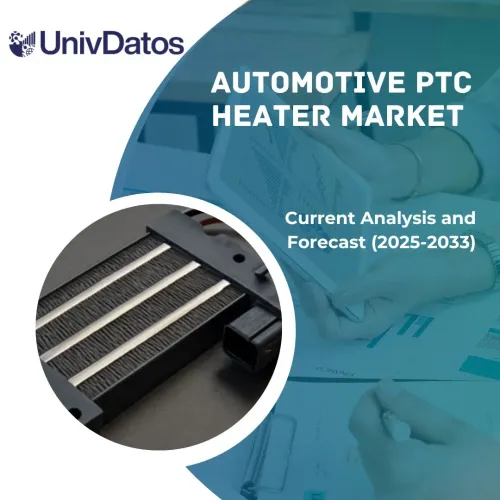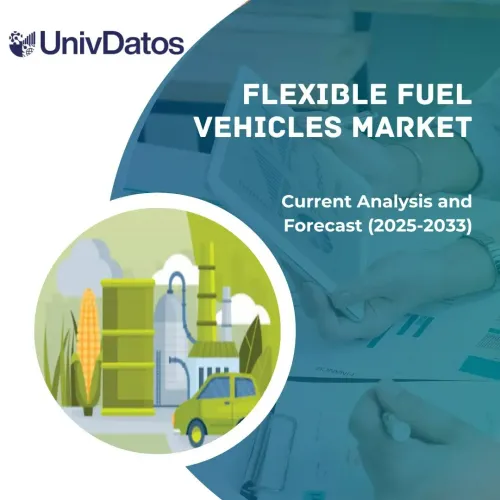- الرئيسية
- معلومات عنا
- صناعة
- الخدمات
- قراءة
- اتصل بنا
سوق المحولات الحفازة للسيارات: التحليل الحالي والتوقعات (2021-2027)
التركيز على النوع (المحول الحفاز ثنائي الاتجاه، المحول الحفاز ثلاثي الاتجاه، أنواع أخرى)؛ المادة (البلاتين، البلاديوم، الروديوم)؛ المركبة (سيارات الركاب، المركبات التجارية)؛ المنطقة/الدولة
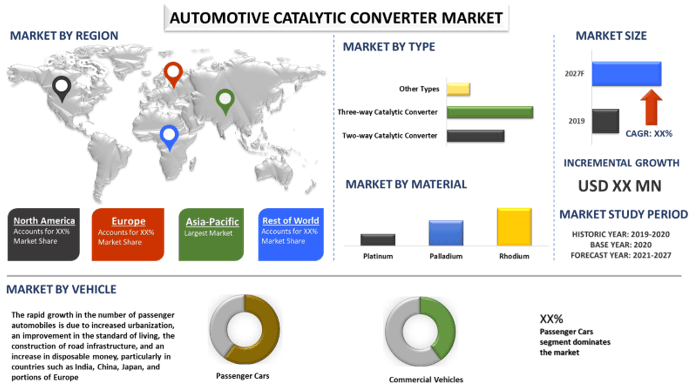 بلغت قيمة سوق المحولات الحفازة للسيارات العالمية 11.9 مليون دولار أمريكي في عام 2020، ومن المتوقع أن يظهر معدل نمو سنوي مركب يبلغ حوالي 6.1% خلال الفترة المتوقعة (2021-2027).المحول الحفاز هو جهاز مضاد للتلوث يتم تركيبه في نظام عادم السيارات والذي يحتوي على محفز لتحويل الغازات الملوثة كيميائيًا مثل أول أكسيد الكربون والهيدروكربونات غير المحترقة وأكاسيد النيتروجين إلى مركبات غير ضارة. بلغت مبيعات جميع المركبات العالمية للسنوات 2020 78 مليون وحدة، مقارنة بـ 90.4 مليون وحدة في عام 2019. عانت الصناعة من انتكاسة بنسبة -14% بسبب انتشار الوباء. تأثرت مبيعات السيارات بشكل رئيسي بالقيود المفروضة على السفر للحد من انتشار فيروس كورونا المستجد (كوفيد-19). على الرغم من النكسة الكبيرة، من المتوقع أن تشهد الصناعة نموًا مزدوج الرقم في السنوات القادمة، مما قد يكون بمثابة محفز رئيسي لمبيعات المحولات الحفازة.
بلغت قيمة سوق المحولات الحفازة للسيارات العالمية 11.9 مليون دولار أمريكي في عام 2020، ومن المتوقع أن يظهر معدل نمو سنوي مركب يبلغ حوالي 6.1% خلال الفترة المتوقعة (2021-2027).المحول الحفاز هو جهاز مضاد للتلوث يتم تركيبه في نظام عادم السيارات والذي يحتوي على محفز لتحويل الغازات الملوثة كيميائيًا مثل أول أكسيد الكربون والهيدروكربونات غير المحترقة وأكاسيد النيتروجين إلى مركبات غير ضارة. بلغت مبيعات جميع المركبات العالمية للسنوات 2020 78 مليون وحدة، مقارنة بـ 90.4 مليون وحدة في عام 2019. عانت الصناعة من انتكاسة بنسبة -14% بسبب انتشار الوباء. تأثرت مبيعات السيارات بشكل رئيسي بالقيود المفروضة على السفر للحد من انتشار فيروس كورونا المستجد (كوفيد-19). على الرغم من النكسة الكبيرة، من المتوقع أن تشهد الصناعة نموًا مزدوج الرقم في السنوات القادمة، مما قد يكون بمثابة محفز رئيسي لمبيعات المحولات الحفازة.
الرؤى المقدمة في التقرير
“من بين الأنواع، هيمنت شريحة مصدر المحفزات ثلاثية الاتجاه على السوق في عام 2020”
بناءً على النوع، يتم تقسيم سوق المحولات الحفازة للسيارات إلى محول حفاز ثنائي الاتجاه، ومحول حفاز ثلاثي الاتجاه، وأنواع أخرى. حاليًا، تُستخدم المحولات الحفازة ثلاثية الاتجاه بشكل أساسي في نظام التحكم في انبعاثات المركبات في جميع أنحاء العالم. من المتوقع أن تسيطر المحولات الحفازة ثلاثية الاتجاه على السوق خلال الفترة المتوقعة.
“من بين المواد، هيمنت شريحة الروديوم على السوق في عام 2020.”
بناءً على المادة، ينقسم سوق المحولات الحفازة للسيارات إلى البلاتين والبلاديوم والروديوم. في عام 2020، هيمنت شريحة الروديوم على السوق، ومن المتوقع أن تحافظ على هيمنتها طوال الفترة المتوقعة. الروديوم مادة شائعة لإعادة تدوير المحولات الحفازة للمركبات لأنه أكثر فاعلية في إزالة انبعاثات العادم الخطرة عن طريق تكسير أكاسيد النيتروجين في غازات العادم وإطلاق غازات الأكسجين والنيتروجين غير الضارة.
“من بين المركبات، هيمنت سيارات الركاب على السوق في عام 2020.”
بناءً على المركبة، يتم تقسيم السوق إلى سيارات الركاب والمركبات التجارية. نظرًا لارتفاع عدد مبيعات وتصنيع سيارات الركاب في جميع أنحاء العالم، فإن فئة سيارات الركاب لديها أكبر حصة في السوق.
“تمثل منطقة آسيا والمحيط الهادئ أكبر سوق.”
لفهم أفضل لاعتماد السوق للمحولات الحفازة للسيارات، يتم تحليل السوق بناءً على وجوده في جميع أنحاء العالم في دول مثل أمريكا الشمالية (الولايات المتحدة وكندا وبقية أمريكا الشمالية)، وأوروبا (ألمانيا والمملكة المتحدة وفرنسا وإسبانيا وبقية أوروبا)، وآسيا والمحيط الهادئ (الصين واليابان والهند وكوريا الجنوبية وبقية منطقة آسيا والمحيط الهادئ)، وبقية العالم. هيمنت منطقة آسيا والمحيط الهادئ على السوق في عام 2020. في عام 2020، باعت الصين والهند ما مجموعه 22.61 مليون سيارة ركاب. بحلول نهاية عام 2025، من المتوقع أن تمتلك الصين حصة كبيرة في السوق في منطقة آسيا والمحيط الهادئ. من المتوقع أن تتجاوز الصين الولايات المتحدة كأكبر سوق في العالم لسيارات الركاب، مما يفتح فرصًا هائلة لسوق المحولات الحفازة للسيارات للنمو. يشمل بعض اللاعبين الرئيسيين الذين يعملون في السوق شركة Faurecia SA وشركة BASF Catalysts LLC وشركة Magneti Marelli S.P.A Tofurky وشركة Tenneco Inc. وشركة Eberspaecher GmbH Holding & Co. وشركة Benteler International AG وشركة Calsonic Kansei Corporation وشركة Futaba Industrial Co. Ltd وBOSAL GROUP وشركة Standard Motor Products Europe Ltd. وما إلى ذلك.
أسباب شراء هذا التقرير:
- تتضمن الدراسة تحديد حجم السوق وتحليل التنبؤات التي تم التحقق منها من قبل خبراء الصناعة الرئيسيين المعتمدين
- يقدم التقرير مراجعة سريعة للأداء العام للصناعة في لمحة
- يغطي التقرير تحليلًا متعمقًا لرواد الصناعة البارزين مع التركيز بشكل أساسي على البيانات المالية التجارية الرئيسية ومحفظة المنتجات واستراتيجيات التوسع والتطورات الأخيرة
- فحص تفصيلي للدوافع والقيود والاتجاهات الرئيسية والفرص السائدة في الصناعة
- تغطي الدراسة السوق بشكل شامل عبر شرائح مختلفة
- تحليل إقليمي وتحليل على مستوى الدولة للصناعة
خيارات التخصيص:
يمكن تخصيص سوق المحولات الحفازة للسيارات العالمية بشكل أكبر حسب المتطلبات أو أي شريحة سوق أخرى. إلى جانب ذلك، تدرك UMI أن لديك احتياجات عملك الخاصة، وبالتالي لا تتردد في التواصل معنا للحصول على تقرير يناسب متطلباتك تمامًا.
جدول المحتويات
كان تحليل السوق التاريخي وتقدير السوق الحالي والتنبؤ بالسوق المستقبلي للمعادن الأرضية النادرة هي الخطوات الرئيسية الثلاث التي تم اتخاذها لإنشاء وتحليل اعتمادها في جميع أنحاء العالم. تم إجراء بحث ثانوي شامل لجمع أرقام السوق التاريخية وتقدير حجم السوق الحالي. ثانيًا، للتحقق من صحة هذه الرؤى، تم أخذ العديد من النتائج والافتراضات في الاعتبار. علاوة على ذلك، تم أيضًا إجراء مقابلات أولية مكثفة مع خبراء الصناعة عبر سلسلة القيمة لصناعة المعادن الأرضية النادرة. بعد افتراض والتحقق من صحة أرقام السوق من خلال المقابلات الأولية، استخدمنا نهجًا من أعلى إلى أسفل/من أسفل إلى أعلى للتنبؤ بحجم السوق الكامل. بعد ذلك، تم اعتماد طرق تقسيم السوق وتثليث البيانات لتقدير وتحليل حجم السوق للقطاعات والقطاعات الفرعية التي تنتمي إليها الصناعة. يتم شرح المنهجية التفصيلية أدناه:
تحليل حجم السوق التاريخي
الخطوة 1: دراسة متعمقة للمصادر الثانوية:
تم إجراء دراسة ثانوية تفصيلية للحصول على حجم السوق التاريخي لسوق المعادن الأرضية النادرة من خلال مصادر الشركة الداخلية مثلالتقارير السنوية والبيانات المالية وعروض الأداء والبيانات الصحفية وما إلى ذلك،والمصادر الخارجية بما في ذلكالمجلات والأخبار والمقالات والمنشورات الحكومية ومنشورات المنافسين وتقارير القطاعات وقاعدة بيانات الطرف الثالث والمنشورات الموثوقة الأخرى.
الخطوة 2: تقسيم السوق:
بعد الحصول على حجم السوق التاريخي لسوق المعادن الأرضية النادرة، أجرينا تحليلًا ثانويًا تفصيليًا لجمع رؤى السوق الحالية وحصتها للقطاعات والقطاعات الفرعية المختلفة للمناطق الرئيسية. شملت القطاعات الرئيسية الواردة في التقرير المعادن والتطبيق. علاوة على ذلك، تم إجراء تحليلات إقليمية وعلى مستوى الدولة لتقييم الاعتماد العام للمعادن الأرضية النادرة على مستوى العالم.
الخطوة 3: تحليل العوامل:
بعد الحصول على حجم السوق التاريخي للقطاعات والقطاعات الفرعية المختلفة، أجريناتحليل العوامللتقدير حجم السوق الحالي للمعادن الأرضية النادرة. علاوة على ذلك، أجرينا تحليلًا للعوامل باستخدام متغيرات تابعة ومستقلة مثل القطاع الصناعي المتنامي، والطلب المتزايد على منتجات الإلكترونيات الاستهلاكية، وزيادة اعتماد السيارات الكهربائية. تم إجراء تحليل شامل لسيناريوهات جانب الطلب والعرض مع الأخذ في الاعتبار الشراكات الكبرى وعمليات الدمج والاستحواذ والتوسع في الأعمال وإطلاق المنتجات في صناعة المعادن الأرضية النادرة.
تقدير وتوقعات حجم السوق الحالي
تحديد حجم السوق الحالي:بناءً على رؤى قابلة للتنفيذ من الخطوات الثلاث المذكورة أعلاه، توصلنا إلى حجم السوق الحالي والجهات الفاعلة الرئيسية في سوق المعادن الأرضية النادرة العالمية وحصص السوق لكل قطاع. تم تحديد جميع حصص النسب المئوية المقسمة وتقسيمات السوق باستخدام النهج الثانوي المذكور أعلاه وتم التحقق منها من خلال المقابلات الأولية.
التقدير والتنبؤ:لتقدير السوق والتنبؤ به، تم تعيين أوزان لعوامل مختلفة بما في ذلك المحركات والاتجاهات والقيود والفرص المتاحة لأصحاب المصلحة. بعد تحليل هذه العوامل، تم تطبيق تقنيات التنبؤ ذات الصلة، أي نهج من أعلى إلى أسفل/من أسفل إلى أعلى، للوصول إلى توقعات السوق حتى عام 2027 لقطاعات وقطاعات فرعية مختلفة عبر المناطق الرئيسية على مستوى العالم. تشمل منهجية البحث المعتمدة لتقدير حجم السوق:
- حجم الصناعة من حيث القيمة (بالدولار الأمريكي) ومعدل اعتماد المعادن الأرضية النادرة عبر الأسواق الرئيسية
- جميع حصص النسب المئوية وتقسيمات وتقسيمات السوق للقطاعات والقطاعات الفرعية
- الجهات الفاعلة الرئيسية في المعادن الأرضية النادرة من حيث الخدمات المقدمة. بالإضافة إلى ذلك، استراتيجيات النمو التي اعتمدها هؤلاء اللاعبون للتنافس في السوق سريعة النمو.
التحقق من صحة حجم وحصة السوق
البحث الأولي:تم إجراء مقابلات متعمقة مع قادة الرأي الرئيسيين (KOLs) بما في ذلك كبار المسؤولين التنفيذيين (CXO/VPs ورئيس المبيعات ورئيس التسويق والرئيس التشغيلي ورئيس المنطقة ورئيس الدولة وما إلى ذلك) عبر المناطق الرئيسية. ثم تم تلخيص نتائج البحوث الأولية، وتم إجراء تحليل إحصائي لإثبات الفرضية المذكورة. تم دمج المدخلات من البحث الأولي مع النتائج الثانوية، وبالتالي تحويل المعلومات إلى رؤى قابلة للتنفيذ.
تقسيم المشاركين الأوليين في مناطق مختلفة
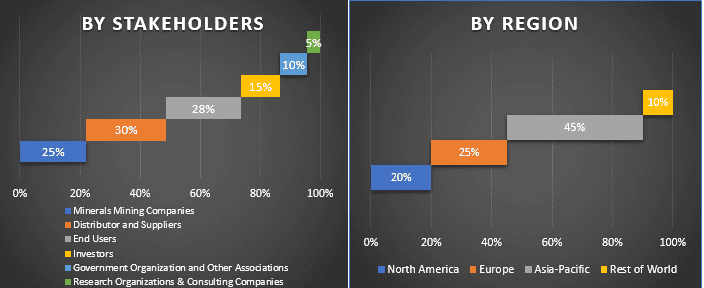
هندسة السوق
تم توظيف تقنية تثليث البيانات لإكمال التقدير العام للسوق والتوصل إلى أرقام إحصائية دقيقة لكل قطاع وقطاع فرعي من سوق المعادن الأرضية النادرة العالمية. تم تقسيم البيانات إلى عدة قطاعات وقطاعات فرعية بعد دراسة معلمات واتجاهات مختلفة في مجالات المعادن والتطبيق.
الهدف الرئيسي من دراسة سوق المعادن الأرضية النادرة
تم تحديد اتجاهات السوق الحالية والمستقبلية للمعادن الأرضية النادرة العالمية في الدراسة. يمكن للمستثمرين الحصول على رؤى استراتيجية لبناء تقديرهم للاستثمارات من التحليل النوعي والكمي الذي تم إجراؤه في الدراسة. ستحدد اتجاهات السوق الحالية والمستقبلية الجاذبية العامة للسوق على المستوى القطري، مما يوفر منصة للمشارك الصناعي لاستغلال السوق غير المستغلة للاستفادة كميزة المحرك الأول. تشمل الأهداف الكمية الأخرى للدراسات:
- تحليل حجم السوق الحالي والمتوقع للمعادن الأرضية النادرة من حيث القيمة (بالدولار الأمريكي). أيضًا، تحليل حجم السوق الحالي والمتوقع للشرائح والشرائح الفرعية المختلفة
- تشمل القطاعات في الدراسة مجالات المعادن والتطبيقات
- تحليل محدد للإطار التنظيمي لصناعة المعادن الأرضية النادرة
- تحليل سلسلة القيمة المعنية بوجود مختلف الوسطاء، إلى جانب تحليل سلوكيات العملاء والمنافسين في الصناعة
- تحليل حجم السوق الحالي والمتوقع للمعادن الأرضية النادرة للدول الرئيسية
- تشمل المناطق / البلدان الرئيسية التي تم تحليلها في التقرير أمريكا الشمالية (الولايات المتحدة وكندا وبقية أمريكا الشمالية) وأوروبا (ألمانيا والمملكة المتحدة وفرنسا وإسبانيا وبقية أوروبا) وآسيا والمحيط الهادئ (الصين واليابان والهند وأستراليا وبقية دول آسيا والمحيط الهادئ) وبقية العالم.
- ملفات تعريف الشركات الخاصة بلاعبي المعادن الأرضية النادرة واستراتيجيات النمو التي اعتمدوها للحفاظ على مكانتهم في السوق سريع النمو
تحليل متعمق للصناعة على مستوى الدولة
ذات صلة التقارير
العملاء الذين اشتروا هذا المنتج اشتروا أيضًا


